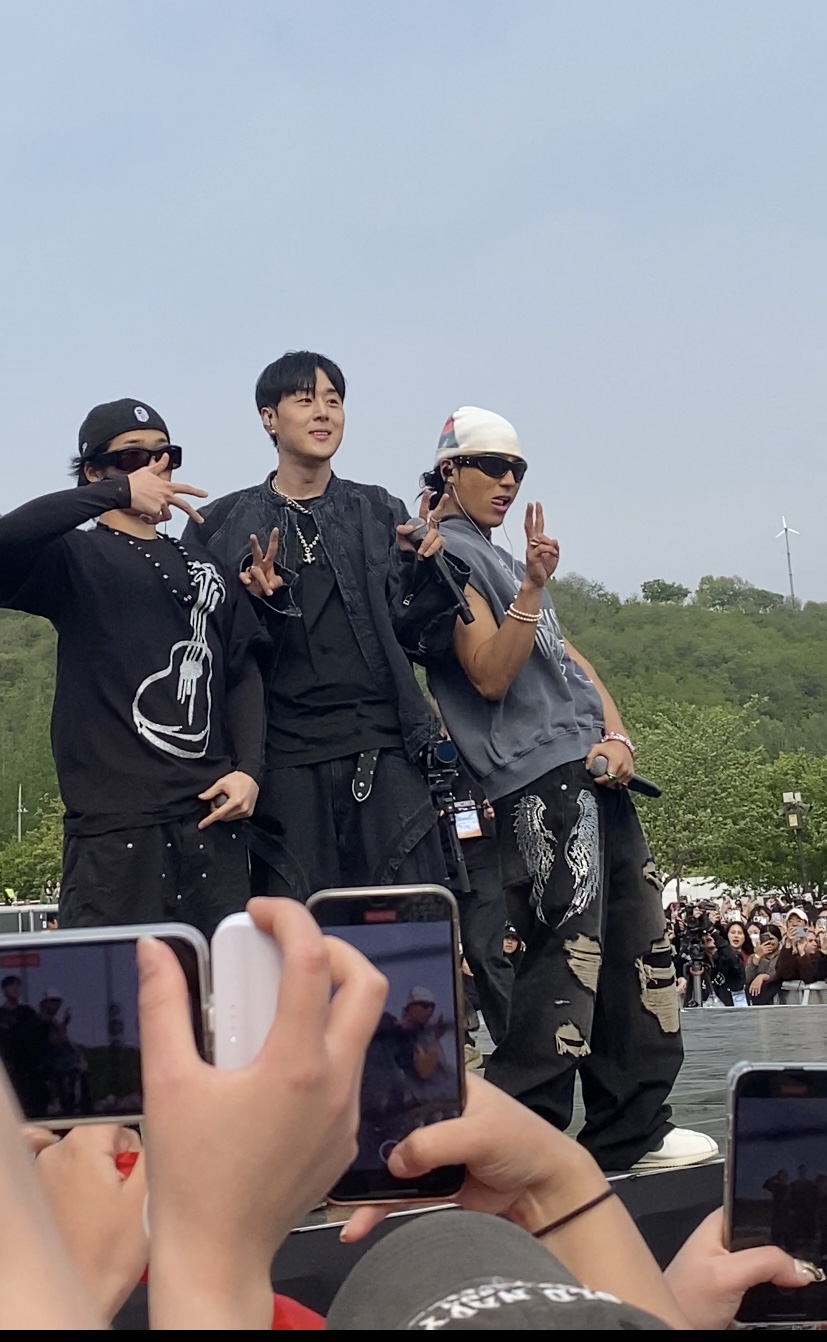
One of the first things people think of when South Korea is mentioned is K-pop. This is because of how global of a craze it has become. In South Korea, it is not only K-pop groups that are loved, but music is a large part of the country’s culture.
I have had the ability to go to many different music events during my time here. The events most like the ones held in US, are music festivals and concerts. In the states, these events are packed with people standing, hitting against each other, and you aren’t allowed to bring anything in for yourself, but buy everything there. In Korea, many events allow one to bring in certain food items in reusable containers, as well as water bottles up to a certain size. The Lovesome Festival I attended was unlike any festival I had been to before, like Warped Tour or Coachella. It had a picnic area in front of the stage where everyone had, or could buy, mats to sit on. At the Lovesome Festival, this area was directly in front of the stage. This meant that throughout each artists’ performance, everyone is sitting and cheering, and not standing and dancing or jumping around. I felt more relaxed and less tired during the entire festival, but I felt somewhat bad for the artists’ performing. Even if they can perform amazingly whether people are jumping around or not, I was not sure how they could get energy from a crowd that was sitting. At the HipHopPlaya Festival I attended, the picnic area was available, but behind the standing area. This allowed artists to interact with fans at the barricade and those that would rather sit for parts of the festival to have a place to. I think America should adopt such an area for people that would like to rest for more than just eating food.
Some other musical events I have seen are artists making appearances in clubs, busking, music survival shows, and special live performances. South Korea has many music survival shows yearly. I was able to win a raffle to see a recording for the one that recently ended, Boys Planet. These shows all have a large following since they create new K-pop groups and require audience participation.
To further explain how important how important music seems to be in Korea, you can look at cafés and signs along the street. Stores that sell albums often have special events for the major groups that have comebacks each month. These events could include special photocards, trading, and sometimes themed food. More popular groups can also have events at parks. Seventeen recently had an event that lasted a week at a park. This was to promote their new album ‘FML.’ You could participate in a special photobooth and write notes on a wall that the members could later see. The members of the group even visited the event one night. Besides these events, people also rent out billboards to support their favorite artists. You cannot walk into a subway station without seeing at least one of an artist’s face and a happy birthday message.
Though some might not follow the idol craze shown in Korea, it is hard to not know of the existence of famous idols. Whether it be their song randomly playing in Baskin Robbins or a sign by the bus stop music is found everywhere here.

